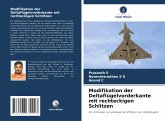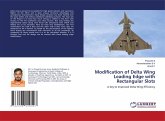
Broschiertes Buch
Ein Schlüssel zur verbesserten Effizienz von Deltaflügeln
24. Februar 2025
OmniScriptum / Verlag Unser Wissen

29,99 €
Versandfertig in 6-10 Tagen
Broschiertes Buch
A Key to Improved Delta Wing Efficiency
10. Januar 2025
LAP Lambert Academic Publishing
Broschiertes Buch
Enhancing Design Precision with Recirculating Airflow Systems
30. Dezember 2024
LAP Lambert Academic Publishing
Broschiertes Buch
Une clé pour améliorer l'efficacité de l'aile Delta
24. Februar 2025
Editions Notre Savoir / OmniScriptum
Broschiertes Buch
Una chiave per migliorare l'efficienza dell'ala a delta
24. Februar 2025
Edizioni Sapienza / OmniScriptum
Broschiertes Buch
Uma chave para melhorar a eficiência da asa delta
24. Februar 2025
Edições Nosso Conhecimento / OmniScriptum
Broschiertes Buch
Klucz do lepszej wydajno¿ci skrzyde¿ Delta
24. Februar 2025
OmniScriptum / Wydawnictwo Nasza Wiedza
Broschiertes Buch
Una clave para mejorar la eficiencia de las alas Delta
24. Februar 2025
Ediciones Nuestro Conocimiento
Ähnlichkeitssuche: Fact®Finder von OMIKRON
